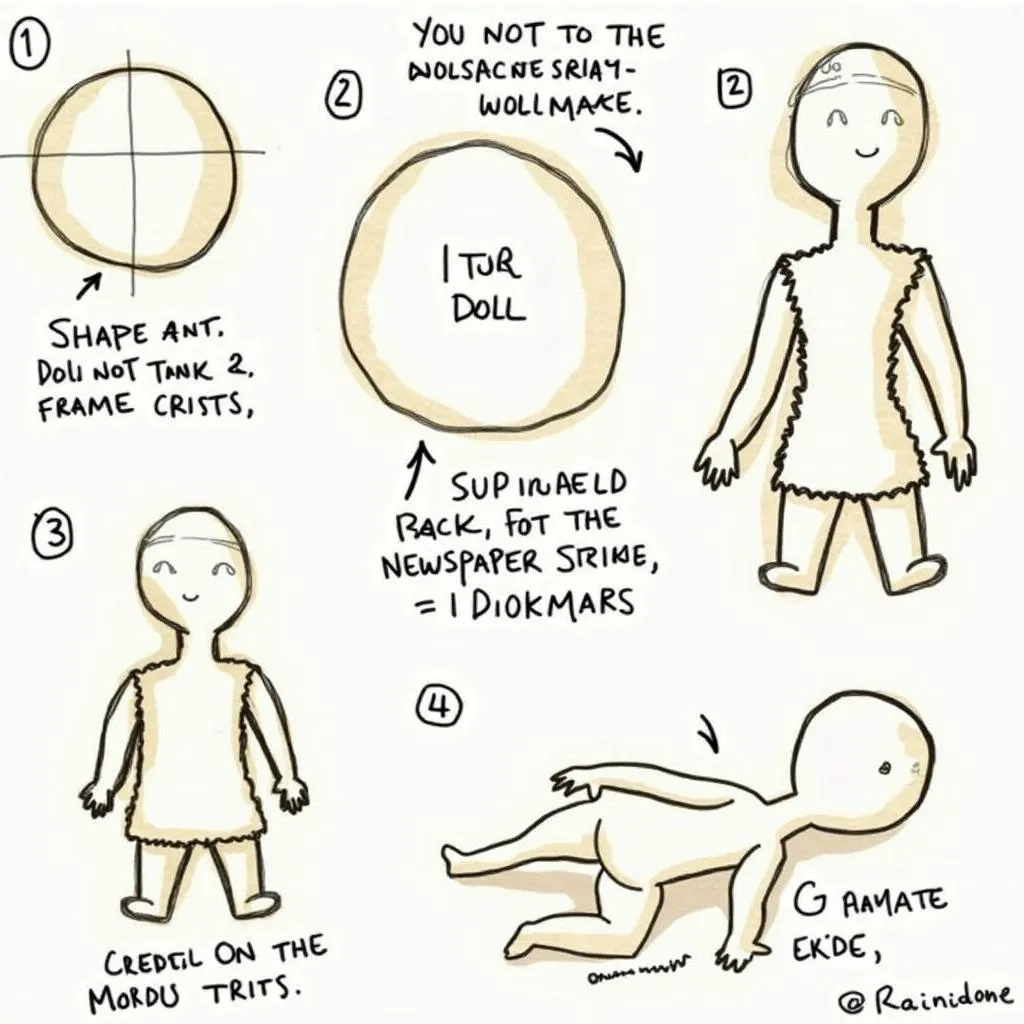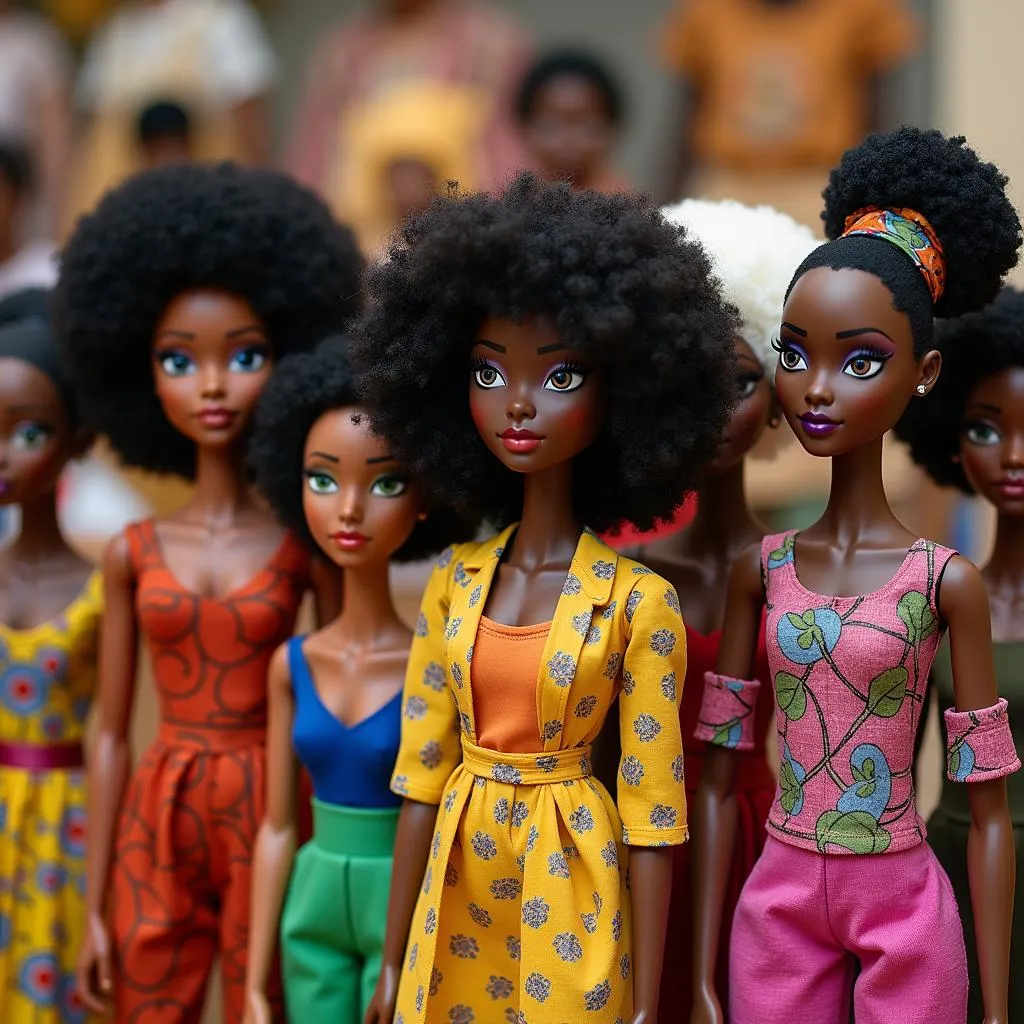Unveiling the Story Behind the African Doll From Newspaper
An African Doll From Newspaper might seem like a simple craft project, but it’s so much more than meets the eye. This unique creation, built from readily available materials, embodies the spirit of resourcefulness deeply ingrained in African culture. More than just a toy, it reflects a rich history of storytelling, artistic expression, and the clever utilization of limited resources.
More Than Meets the Eye: The Significance of Newspaper Dolls in Africa
In many African cultures, dolls are not just playthings. They serve as powerful symbols imbued with deep cultural and societal significance. They are often used in traditional ceremonies, storytelling, and even as educational tools to teach children about their heritage.
The choice of newspaper as a primary material speaks volumes about the ingenuity and resilience of African communities. Newspaper, often readily available and inexpensive, transforms into a canvas for creativity. This resourceful approach to art making highlights the beauty found in the everyday and the ability to transform the ordinary into something extraordinary.
A Journey Through Time: Exploring the History of African Doll Making
 African Doll Making History
African Doll Making History
The tradition of doll making in Africa dates back centuries. Archaeological evidence reveals ancient dolls crafted from materials like clay, wood, and bone, showcasing the long-standing presence of dolls in African societies. These early examples provide a glimpse into the lives and beliefs of people from those times.
Over time, as new materials were introduced, African doll making evolved. The use of recycled materials, like newspapers, gained popularity as a testament to the resourcefulness and adaptability of African artisans. These dolls, far from being mere imitations of Western counterparts, developed their own unique aesthetic and cultural significance.
The Art of Crafting: How to Make Your Own African Doll from Newspaper
 Crafting an African Newspaper Doll
Crafting an African Newspaper Doll
Creating an African doll from newspaper is a rewarding experience, offering a tangible connection to African culture and heritage. The process itself is simple yet engaging, making it an ideal activity for all ages. Here’s a basic guide:
- Gather your materials: You’ll need newspapers, glue, scissors, and optional materials like yarn for hair and fabric scraps for clothing.
- Create the framework: Roll sheets of newspaper tightly to form the doll’s limbs and torso, securing them with glue.
- Shape the head and body: Use additional newspaper to mold the head and fill out the body, creating the desired shape and proportions.
- Add details: Once the basic form is complete, you can personalize your doll by adding features like hair, facial features, and clothing.
This is just a starting point; the beauty of this craft lies in its versatility. You can experiment with different techniques, materials, and embellishments to create a unique and personalized doll that reflects your own creativity and interpretation of African aesthetics.
Beyond the Craft: The Impact and Legacy of African Dolls
 The Cultural Impact of African Dolls
The Cultural Impact of African Dolls
The impact of African dolls extends far beyond the realm of crafts. They serve as powerful tools for cultural preservation, education, and empowerment. For the African diaspora, these dolls represent a tangible link to their heritage, allowing them to connect with their roots and share their culture with future generations.
Moreover, African dolls have gained international recognition for their artistic merit and cultural significance. They are featured in museums and art galleries worldwide, sparking conversations about African art, identity, and representation. This global appreciation highlights the power of art to transcend borders and foster cross-cultural understanding.
Conclusion: Celebrating the Beauty and Significance of African Dolls
The African doll from newspaper, humble in its origins yet profound in its meaning, represents the heart of African creativity and resilience. It’s a testament to the ability to find beauty in everyday materials and to transform the ordinary into something extraordinary. By understanding the history, symbolism, and crafting techniques behind these unique dolls, we gain a deeper appreciation for the rich cultural tapestry of Africa.
Frequently Asked Questions
1. What other materials can be used to make African dolls?
While newspapers are a popular choice, African dolls can be crafted from various materials, including fabric, clay, wood, beads, and recycled items like bottle caps and wire.
2. Are there different types of African dolls?
Yes, there are countless styles of African dolls, each reflecting the unique traditions and aesthetics of different ethnic groups across the continent. Some popular examples include Ashanti Akuaba dolls from Ghana, known for their distinctive disc-shaped heads, and Ndebele dolls from South Africa, recognized for their vibrant beaded attire.
3. Where can I learn more about the history of African doll making?
Many online resources and books delve into the fascinating history of African doll making. Additionally, museums with ethnographic collections often feature exhibits dedicated to African art and artifacts, including dolls.
4. Are African dolls only for children?
While they are often associated with children’s toys, African dolls hold cultural and artistic significance that transcends age. They are collected, displayed, and appreciated by people of all ages worldwide.
5. Can I buy authentic African dolls?
Yes, you can find authentic African dolls from reputable sellers online and in fair trade stores. Purchasing from ethical sources ensures that artisans are paid fairly for their work and helps support the continuation of traditional crafts.
For any inquiries or assistance, please don’t hesitate to reach us at:
Phone: +255768904061
Email: kaka.mag@gmail.com
Address: Mbarali DC Mawindi, Kangaga, Tanzania.
Our dedicated customer support team is available 24/7 to assist you.



